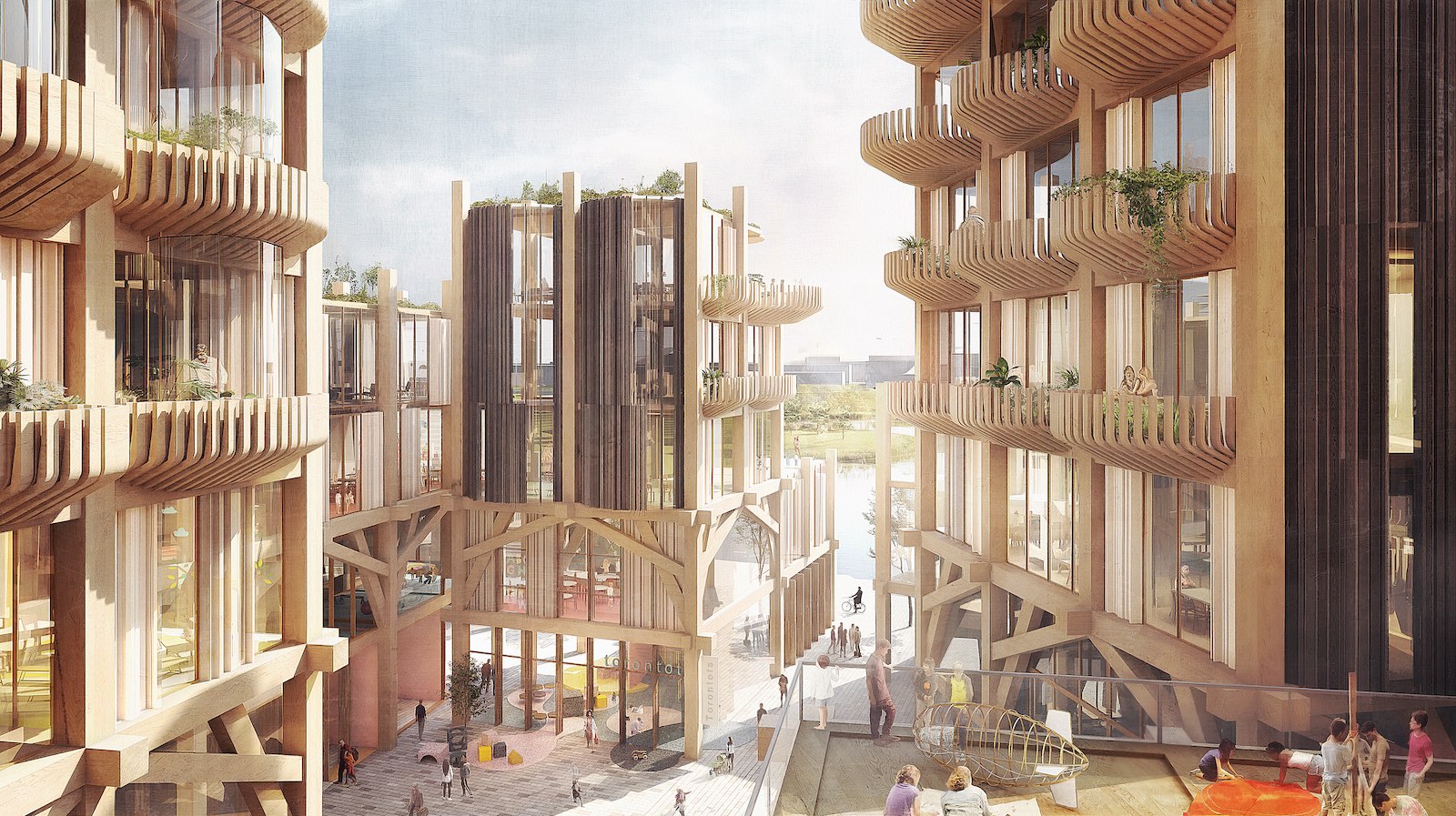Google’s sister company, Sidewalk Labs, has released updated plans on their smart city district in Toronto, Canada. This, Sidewalk Labs’ first major project, has been fraught with mystery, leaks, and rapant speculation, but we are starting to learn more about the project. Documents released last week show a range of innovative new features and strategies, that Google will no doubt hope, quells the unrest amongst Toronto citizens about the project.
The new plans were leaked, published in the Toronto Star on Valentines Day, forcing Sidewalk Labs into releasing official documents that it says “are not even approved by Alphabet yet,” the firm’s parent company.
The most controvertial element of the leaked plans is that rather than the 12 acre development that had been discussed until now, the new documents refer to 350 acres. This suggests that Sidewalk Labs is looking at developing almost all of Toronto’s unused eastern waterfront area, in what they call the “extended innovation area.”
This has not gone down well with a growing group of Toronto residents and international observers. Many of whom have been fighting the project from the very start, claiming tech-companies, including Google, are keen to get into cities for “uban profiteering” rather than for the benefit of citizens. Issues surrounding privacy, cybersecurity, and inorganic urban reform, among others, have divided the public. All this before actual plans have been confirmed, and long before ground is broken.
“It isn’t fully baked and people just naturally are afraid of new things,” said Dan Doctoroff, CEO of Sidewalk Labs, responded to mounting criticism of the project in the wake of the leaked documents. “The best thing we can do is sit down with them and explain and we will be thoughtful and patient and listen to people’s concerns and hopefully reach a place where we have a mutually acceptable way of moving forward that doesn’t have to be what we suggested.”
Open discussion between residents and Sidewalk Labs is the one thing both sides of the debate agree on. “We’ll figure out as we go what the next steps are, but everything is on the table. To start, all we need to do is to bring residents together,” stated Bianca Wylie, a campaign organizer, open government advocate, prominent critic of the Sidewalk Labs project. Wylie’s comments acompanied the leaked story, which also catalyzed the boom of a #BlockSidewalk movement on social media.
Honestly, “urban profiteering” is not the wildest accusation; no one is expecting private revelopment with intention to make profit. Nor are profitability and citizen-friendly cities necessarily exclusive of one another. As you would expect, social cohesion and environmental responsibility are built into the fabric of the project. The use of wood symbolises this development, with a range of timber buildings ranging up to 30 stories high to be built, providing structural and environmental benefits, and also a boost to Canada’s logging and timber industries.
Much of the plan is similar to the plans released last summer, as covered in an August article. However, there are some noticable differences, espcially in the more realistic artist renderings that replace the cartoon style images in year’s last verson.
Buildings appear more curved than before, suggesting some extra biophilic considertions, and the images highlight the numerous, carefully designed, social areas. As with many artist renderings, the district appears utopian, with no sign of the ugly things that make cities work, but the updated plan gives away the burried secret to these idillic scenes.

Google takes a variety of services underground with robots to free up the street level for humans. Robotic vehicles will zoom around subterranean tunnels to make deliveries and remove trash from around the district. This will reduce congestion on the street, as well as removing “ugly” or disruptive elements like garbage trucks and delivery vehicles. A network of underground tunnels will handle the transport of all “last mile services,” and some expect that food deliveries will also be serviced by these tunnels.
Moving services underground is not an entirely new concept. In fact, the famous urban planner Georges-Eugène Haussmann even proposed the idea for Paris well over 100 years ago. Today, Disneyworld and Roosevelt Island both feature underground refuse collection, completely out of sight of the visitors above. However, fully automating underground services using robots and driverless vehicles takes the concept to a new, more efficient and smarter level.
By placing great focus on social cohesion and environmental responsibility, Sidewalk Labs has no doubt avoided an even more significant backlash. However, the simple fact that Google, the world’s biggest corporation, one infamous for its collection of personal user data, is seeking to design and manage a city district is enough to cause concern and enthusiastic opposition.
If people don’t like Google’s AI reading their Gmail then how will they feel when Google runs their building? It seems likely that the Quayside project will go ahead but not before a charm offensive and some bold promises from Google’s little sister.



